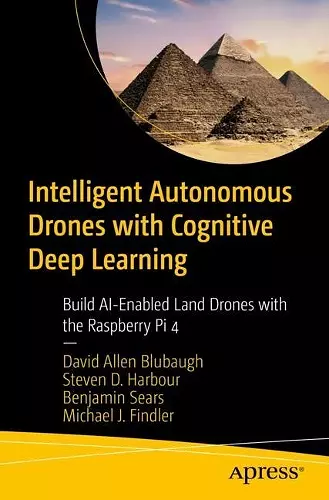Intelligent Autonomous Drones with Cognitive Deep Learning
Build AI-Enabled Land Drones with the Raspberry Pi 4
David Allen Blubaugh author Steven D Harbour author Benjamin Sears author Michael J Findler author
Format:Paperback
Publisher:APress
Published:1st Nov '22
Should be back in stock very soon

What is an artificial intelligence (AI)-enabled drone and what can it do? Are AI-enabled drones better than human-controlled drones? This book will answer these questions and more, and empower you to develop your own AI-enabled drone.
You'll progress from a list of specifications and requirements, in small and iterative steps, which will then lead to the development of Unified Modeling Language (UML) diagrams based in part to the standards established by for the Robotic Operating System (ROS). The ROS architecture has been used to develop land-based drones. This will serve as a reference model for the software architecture of unmanned systems.
Using this approach you'll be able to develop a fully autonomous drone that incorporates object-oriented design and cognitive deep learning systems that adapts to multiple simulation environments. These multiple simulation environments will also allow you to further build public trust in the safety of artificial intelligence within drones and small UAS. Ultimately, you'll be able to build a complex system using the standards developed, and create other intelligent systems of similar complexity and capability.
Intelligent Autonomous Drones with Cognitive Deep Learning uniquely addresses both deep learning and cognitive deep learning for developing near autonomous drones.
What You’ll Learn
- Examine the necessary specifications and requirements for AI enabled drones for near-real time and near fully autonomous drones
- Look at software and hardware requirements
- Understand unified modeling language (UML) and real-time UML for design
- Study deep learning neural networks for pattern recognition
- Review geo-spatial Information for the development of detailed mission planning within these hostile environments
Who This Book IsFor
Primarily for engineers, computer science graduate students, or even a skilled hobbyist. The target readers have the willingness to learn and extend the topic of intelligent autonomous drones. They should have a willingness to explore exciting engineering projects that are limited only by their imagination. As far as the technical requirements are concerned, they must have an intermediate understanding of object-oriented programming and design.
ISBN: 9781484268025
Dimensions: unknown
Weight: unknown
511 pages
1st ed.